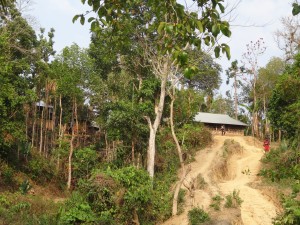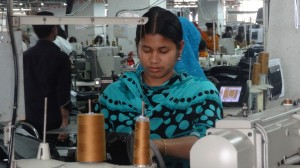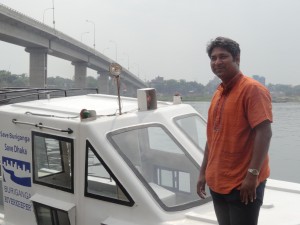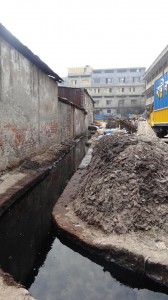News Archives » garment industry
JPIC Report Fall/Winter 2013 Issue Available October 24th, 2013
 The Fall/Winter 2013 issue of JPIC Report is now available on line as a PDF. It is also available in print form. Please contact Mary O’Herron in the JPIC Office if you want to be added to the mailing list.
The Fall/Winter 2013 issue of JPIC Report is now available on line as a PDF. It is also available in print form. Please contact Mary O’Herron in the JPIC Office if you want to be added to the mailing list.
You can find all issues of JPIC Report on this website in the Resources section. (Download a PDF of the latest issue)
Water Pollution in Bangladesh Threatens Human Health and Agriculture July 16th, 2013
Rivers and canals in Bangladesh are becoming increasingly polluted from industrial wastewater dumped by factories, many of them in the textile industry, The New York Times has reported. Leather tanneries are also a significant source of toxic pollutants to the air and water. The water pollution threatens food production and is raising both environmental and human health concerns.
Human Rights Watch issued a report late last year on the human health effects of unchecked pollution from the leather industry. The report, Toxic Tanneries, documents an occupational health and safety crisis among tannery workers, both men and women, including skin diseases and respiratory illnesses caused by exposure to tanning chemicals, and limb amputations caused by accidents in dangerous tannery machinery. Residents of the area where the tanneries are located are also seriously affected. The government has consistently failed to enforce labor and environmental laws in Hazaribagh, a suburb of Dhaka, and has ignored High Court orders to clean up or move the tanneries.
A New Era for the Bangladesh Garment Industry? July 7th, 2013
A PBS Religion & Ethics Newsweekly video clearly explains the realities confronting the Bangladesh garment industry. Cheap clothes come at a high cost.
Clothing Retailers Pressed on Safety Issues May 12th, 2013
The Rev. Seamus Finn, OMI (OMI JPIC Office Director) was quoted in a recent New York Times article on the building collapse and fires in the Bangladesh garment industry, saying: “What happened in Bangladesh is a game-changer because of the gravity of the situation and the tremendous loss of life,” Father Finn said. “People are really coming to life about this and saying, ‘We need to do something.’ ”
Rev. Finn is circulating a letter among other faith-based and socially responsible investors – groups that control more than $100 billion in assets — expressing displeasure with U.S. retailers. He says the retailers have not done nearly enough to improve workplace safety for the more than three million garment workers in Bangladesh.
Bangladesh labor costs in the garment manufacturing industry are the lowest in the world. Decent factory operations there are under tremendous pressure from their purchasers to lower costs, with the buyers threatening to ‘take their business down the road’ unless their terms are met.
JPIC Staff Visits Bangladesh May 3rd, 2013
 Christina Herman, JPIC Office Associate Director, visited Bangladesh in late March/early April. Her daughter, Emma, accompanied her, taking thousands of photos and copious notes. Fr. Joseph Gomes, OMI graciously hosted a ten day trip around the Sylhet region of NE Bangladesh, which provided a fascinating look at the lives of the indigenous Khasi people and the issues confronting their villages. The Oblate mission in Bangladesh started in the Sylhet region, and there are a number of parishes among the indigenous peoples of the area.
Christina Herman, JPIC Office Associate Director, visited Bangladesh in late March/early April. Her daughter, Emma, accompanied her, taking thousands of photos and copious notes. Fr. Joseph Gomes, OMI graciously hosted a ten day trip around the Sylhet region of NE Bangladesh, which provided a fascinating look at the lives of the indigenous Khasi people and the issues confronting their villages. The Oblate mission in Bangladesh started in the Sylhet region, and there are a number of parishes among the indigenous peoples of the area.
Frequent national strikes (or hartals) called by a political opposition determined to undermine the government made the trip challenging, but the group covered a lot of ground.
In Dhaka, Christina teamed up with the Bangladesh WaterKeeper, Sharif Jamil, in an examination of environmental and labor issues related to the leather and garment export industries. They visited the Buriganga River, leather tanneries north of the city, a massive garment factory, and had a number of informative meetings with factory owners and managers, labor union organizers, and environmentalists.
The tanneries are a large source of pollution for the main river flowing through Dhaka, a megacity of an estimated 18 million people. Millions depend on the rivers for bathing, washing clothes, and transportation, yet they are heavily polluted with industrial and human waste. Human Rights Watch recently issued a study of the health impacts of the tanneries, which matched the findings of this trip. Untreated industrial waste flowing from the garment factories is common. A huge factor in the pollution is the lack of adequate sewage treatment for the city’s burgeoning population.
Click here to read more »






